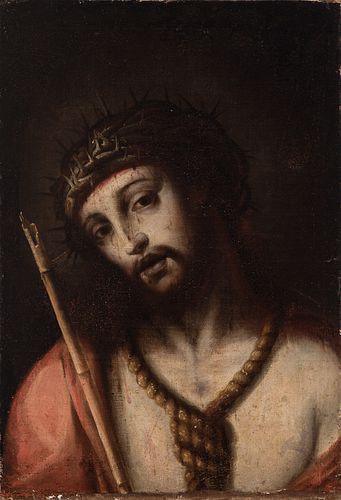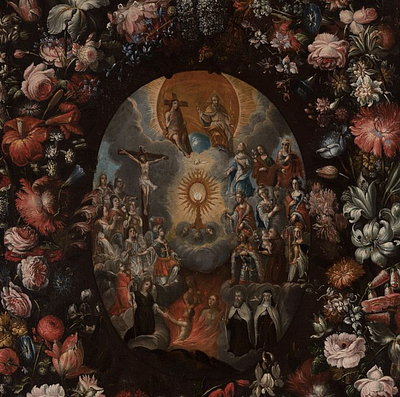Spanish school; second third of the 17th century. "Ecce Homo". Oil on canvas. Re-drawn. It presents slight jumps in the edges. Measurements: 56 x 39 c
Lot 120
About Seller
Setdart Auction House
Carrer Aragó 346
Barcelona
Spain
Setdart Subastas was born in 2004 and is currently the first online art auction in Spain with solidity, prestige and reliability guaranteed by our more than 60,000 users. Setdart has a young, dynamic and enterprising team ready to successfully manage the purchase and sale of art works through custom...Read more
Estimate:
EUR€2,500 - EUR€3,000
$2,604.17 - $3,125
Absentee vs Live bid
Two ways to bid:
- Leave a max absentee bid and the platform will bid on your behalf up to your maximum bid during the live auction.
- Bid live during the auction and your bids will be submitted real-time to the auctioneer.
Bid Increments
| Price | Bid Increment |
|---|---|
| EUR€0 | EUR€10 |
| EUR€200 | EUR€25 |
| EUR€500 | EUR€50 |
| EUR€1,000 | EUR€100 |
| EUR€3,000 | EUR€200 |
| EUR€5,000 | EUR€500 |
| EUR€10,000 | EUR€1,000 |
| EUR€20,000 | EUR€2,000 |
| EUR€50,000 | EUR€5,000 |
About Auction
By Setdart Auction House
Jul 14, 2021
Set Reminder
2021-07-14 06:30:00
2021-07-14 06:30:00
America/New_York
Bidsquare
Bidsquare : OLD MASTERS
https://www.bidsquare.com/auctions/setdart-auction-house/old-masters-7202
Setdart Auction House sofia@setdart.com
Setdart Auction House sofia@setdart.com
- Lot Description
Spanish school; second third of the 17th century. "Ecce Homo". Oil on canvas. Re-drawn. It presents slight jumps in the edges. Measurements: 56 x 39 cm. In this devotional canvas, painted for a particular altar or chapel, the theme of the Ecce Homo is represented, very common in this type of paintings. The composition is simple and clear, with Christ's face in the foreground, and the absence of narrative details enhances the expressive power and pathos, designed to move the soul of the faithful who pray before the image, in a tremendist sense very typical of the Baroque period in Catholic countries. The theme of Ecce Homo belongs to the Passion cycle and precedes the Crucifixion. Following this iconography, Jesus is presented at the moment when the soldiers mock him, after crowning him with thorns, dressing him in a purple tunic (here red, the symbolic colour of the Passion) and placing a reed in his hand, kneeling down and exclaiming "Hail, King of the Jews". The words "Ecce Homo" are those pronounced by Pilate when presenting Christ to the crowd; their translation is "behold the man", a phrase by which he mocks Jesus and implies that Christ's power was not such in comparison with that of the rulers who were judging him. Formally, this work is dominated by the highly contrasted and dramatic treatment of light, based on a spotlight that falls directly on the figure of Christ. The piece faithfully follows the guidelines of Baroque naturalism, defined by the work of Antonio de Pereda y Salgado (Valladolid, 1611-Madrid, 1678), who was noted for his use of a naturalistic and tenebrist aesthetic, interested in a palette similar to that developed in Venice. Thus, visually, the treatment of light dominates, highly contrasted and effective, based on a spotlight that falls directly on the figure of Christ, creating expressive effects of chiaroscuro and leaving the rest in semi-darkness, against a dark, neutral background that further enhances the physical presence of the figure. The colour scheme is also derived directly from these models and is therefore based on a restricted, warm palette of ochre, earthy and carmine tones.
- Shipping Info
-
In-house shipping available. Please inquire at admin@setdart.com.
-
- Buyer's Premium



 EUR
EUR CAD
CAD AUD
AUD GBP
GBP MXN
MXN HKD
HKD CNY
CNY MYR
MYR SEK
SEK SGD
SGD CHF
CHF THB
THB















